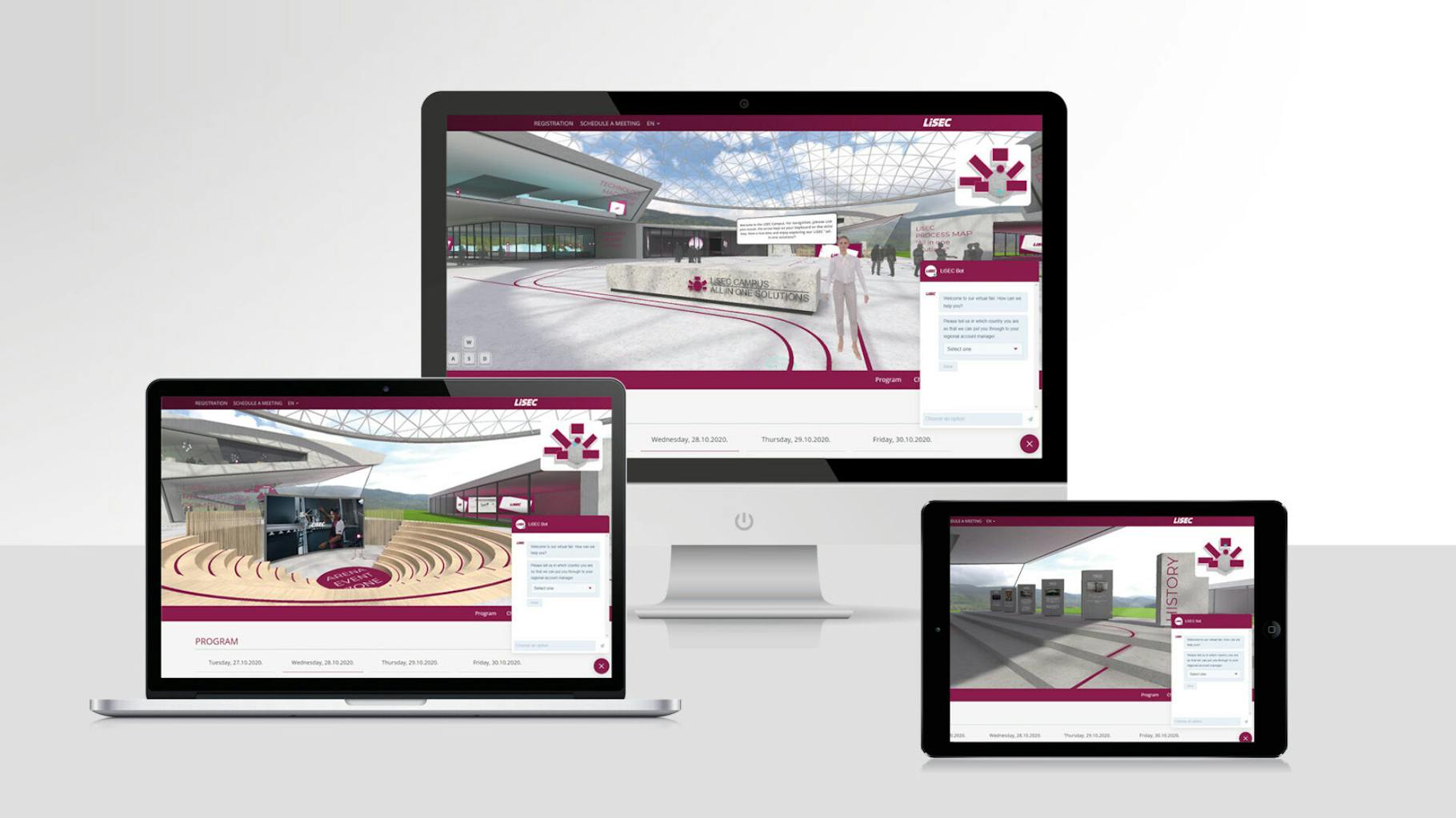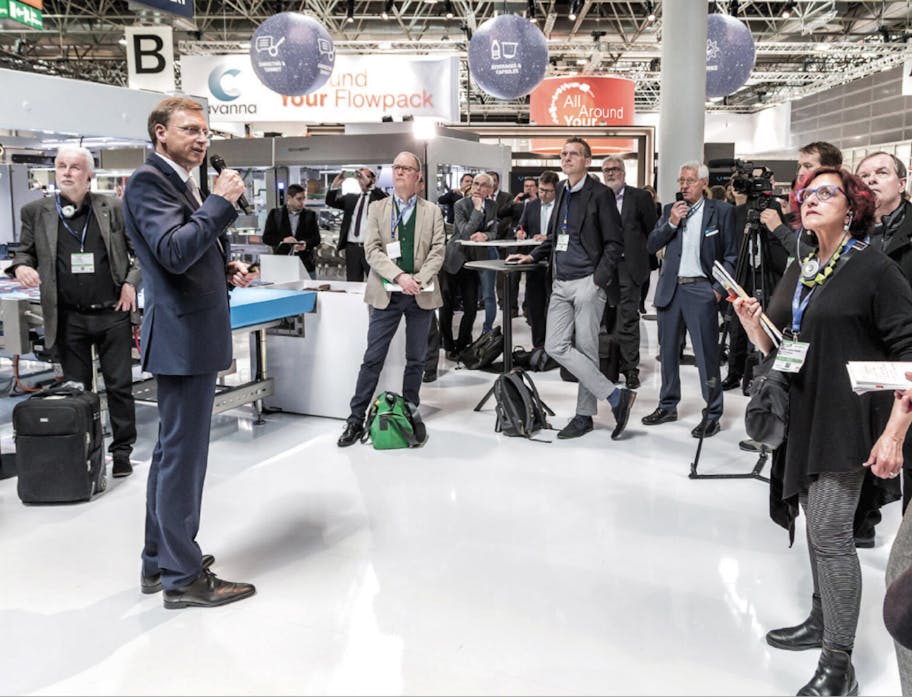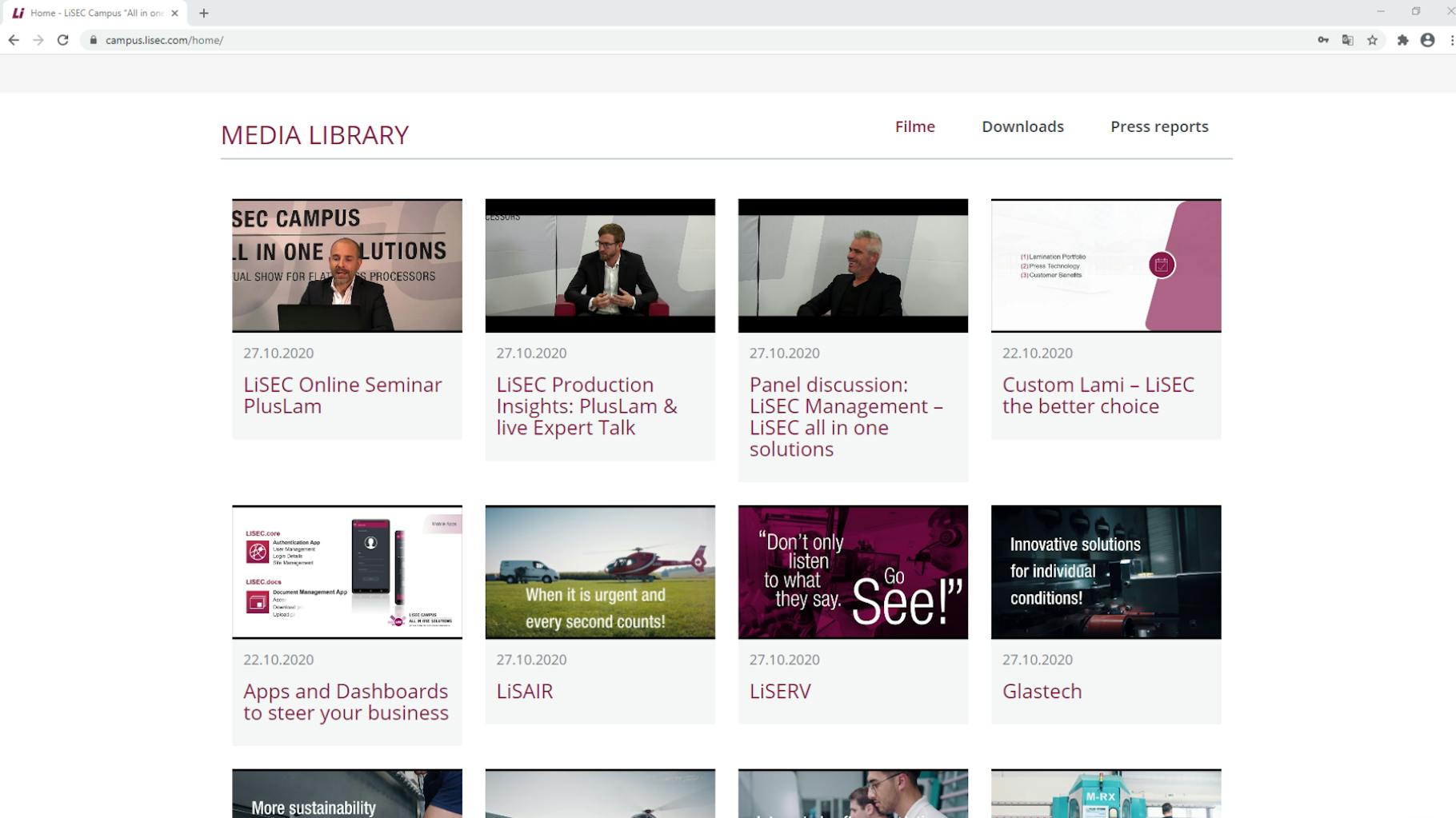hybrid trade fair
Hybrid trade fairs – the event format of the future
Increasingly professional, digital formats have become firmly established in B2B communication. Initial evaluations in marketing controlling are showing clear advantages in several areas compared to live fairs. However, personal dialogue is still unbeatable when it comes to building and maintaining customer contacts – and is of course sorely missed when not available. Now is the time to set the course and build efficient hybrid formats for the future – in other words, capitalising on the best of both worlds.
Trade fairs within two worlds
While the hybrid appears to be a successful bridging technology for carmakers on the road to electromobility, the hybrid trade fair as a combination of physical and virtual trade fair has a good chance of permanently asserting its place in event marketing with ever increasing digitalisation. Hybrid trade fairs combine the advantages of face-to-face events, which will become possible once the pandemic wanes, with the many benefits of a virtual extension: lower costs, overcoming spatial barriers, greater reach and success measurement.
To paraphrase a study by the European Institute for the Meetings Industry (EITW), hybrid events, including hybrid trade fairs, are “here to stay”. It’s not just the cost and reach benefits of these hybrid events that play a vital role, but also the day-to-day experience of increasing digitisation that entrepreneurs, marketing and sales teams have been experiencing since the early 2020s. In just over a year, they have come to appreciate the countless benefits of virtual meetings, conferences, trade shows and other types of events. Whether the long journeys to and from event venues, hotel costs on site and logistics expenses, stand costs including catering and hostess service, the time investment for trade fair personnel with high resource consumption, long preparation times, high organisational expenditure – the classic trade fair as an event format is increasingly being questioned. There is also the issue of how many participants international trade fairs will realistically attract in the future. It can be assumed that the number of visitors will remain permanently below the pre-pandemic level precisely because of the high complexity and effort involved. The need for physical presence at a trade show will be put to the test everywhere.

The hybrid trade fair = an expert, finely tuned combination of digital and analogue dimensions

Systematic lead generation
Hybrid trade fairs logically lead to new event budgeting based on experience acquired with classic trade fairs and the expansion into digital marketing with virtual events. Virtual showrooms, for example, or HR trade fairs offer possibilities that would hardly be feasible in the real trade fair world with available budgets. Moreover, there are effects of systematic digital lead generation. And in addition to collecting marketing leads and qualifying them into sales leads, efficient customer loyalty programs can be developed automatically with the right email marketing tools. More and more large companies, as well as larger medium-sized companies, are seriously looking at this hybrid concept.
It also coincides with the fact that the EITW has noticed a clear trend towards hybrid trade fairs: The institute at the Harz University of Applied Sciences examined how the Corona crisis has affected the events market in Germany and found that before the pandemic began, only 27 percent of those surveyed thought hybrid trade fairs would play a forward-looking role. However, by mid-2020, a good 60 percent of suppliers rated hybrid and spatially unrestricted events and functions as positive. The reasons:
- More cost-effective than a trade fair with on-site presence and less costly overall
- Less travel time and accommodation costs
- Interested parties can visit the event at any time – no matter where they may be physically located (-> larger field of participants)
- People from all over the world can easily participate online and decide exactly which event content they wish to consume
- New or different visitor groups can be reached
- New streams of visitors – who would have stayed away from the live event – will be generated
- Significantly better CO2 footprint of a hybrid trade fair
- Content generation following live discussions, live key notes and shows to stream in social media campaigns (-> even greater reach of the trade fair)
- Experts, who often have a very busy schedule, can be brought in from outside to speak at the event
- Hybrid trade fairs involve the participants interactively and enable communication, exchange and discussions, for instance with the help of live streams and chat offers
- All recorded event content can be stored digitally and made available as on-demand content at a later date
- Sponsors receive an attractive platform for communication with their target groups
Whatever the hybrid trade fair will look like, it will always be important to formulate clear goals in advance – ideally with realistic KPIs – and to build a viable concept together with us. As an agency, we not only have decades of experience with classic trade fairs, but also with virtual event formats. We know how face-to-face events can be replaced or combined with interactive 3D events and we find it very compelling when virtual and augmented realityies come into play at the events.

Hybrid trade fairs are customised and scalable
Ruess International already uses online formats with a lot of interaction, such as video calls, sales chats, games, online advice from experts with appointments, live show demonstrations and individual digital product demonstrations. The key is to combine high-quality content with moving image formats in a user-centric way.
This ranges from 3D moving-image content from existing construction data (also 360-degree videos) to product videos for digital sales, to animations and explanatory films. The scalable offering includes, among other things, the event platform, conference tools, content preparation as well as event scheduling and the implementation of streaming or live acts. This makes the hybrid trade fair event format not only contemporary, sophisticated and personalised, it also offers a high entertainment and information value.
In conclusion: Hybrid events as lively, vibrant events
Trade fair content takes place in two worlds:
Hybrid events
Test our consulting and implementation competence
Let us know your tasks and your goals for hybrid events. We would be happy to provide you with detailed information on examples of virtual and hybrid trade fairs that we have implemented for large corporations and well-known brands.

Angela Kunwald
Managing Director

